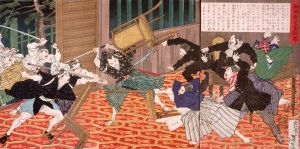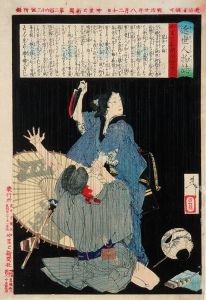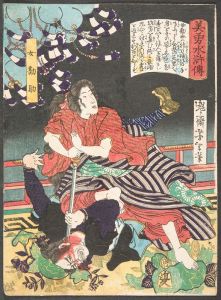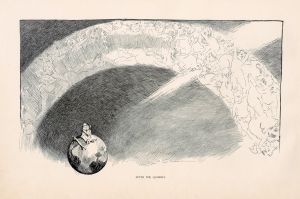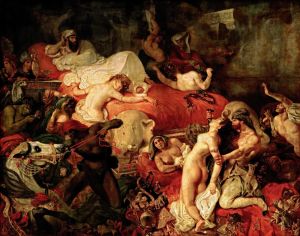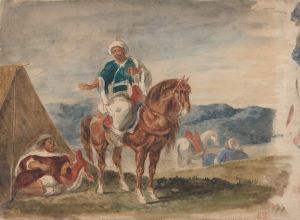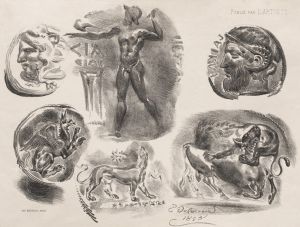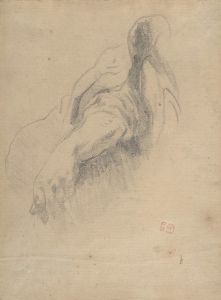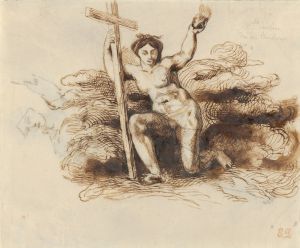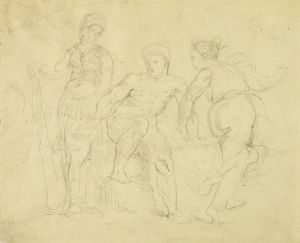
Le Combat du Giaour et du Pacha
A hand-painted replica of Eugène Delacroix’s masterpiece Le Combat du Giaour et du Pacha, meticulously crafted by professional artists to capture the true essence of the original. Each piece is created with museum-quality canvas and rare mineral pigments, carefully painted by experienced artists with delicate brushstrokes and rich, layered colors to perfectly recreate the texture of the original artwork. Unlike machine-printed reproductions, this hand-painted version brings the painting to life, infused with the artist’s emotions and skill in every stroke. Whether for personal collection or home decoration, it instantly elevates the artistic atmosphere of any space.
Eugène Delacroix's painting "Le Combat du Giaour et du Pacha" is an evocative work that captures a dramatic moment inspired by Lord Byron's poem "The Giaour." Delacroix, a leading figure of the Romantic movement in France, was known for his dynamic compositions and vivid use of color, which are prominently displayed in this painting.
The painting depicts a fierce battle between the Giaour, a Christian hero, and the Pacha, a Muslim leader. This confrontation is a central episode in Byron's narrative poem, which tells a tale of love, revenge, and cultural conflict set in the Ottoman Empire. Delacroix was deeply influenced by literary works, and Byron's poetry, with its themes of exoticism and heroism, resonated with the artist's Romantic sensibilities.
Created in 1826, "Le Combat du Giaour et du Pacha" reflects Delacroix's fascination with the Orient, a common theme among Romantic artists who were intrigued by the cultures and landscapes of the East. This interest was partly fueled by the political climate of the time, as the Greek War of Independence (1821–1829) against Ottoman rule was a contemporary event that captured the imagination of many European artists and intellectuals, including Delacroix.
The composition of the painting is dynamic and full of movement, a hallmark of Delacroix's style. The figures of the Giaour and the Pacha are locked in a violent struggle, their bodies intertwined in a chaotic yet harmonious arrangement. Delacroix's use of color is particularly striking, with bold contrasts and rich hues that heighten the drama of the scene. The artist's brushwork is energetic and expressive, contributing to the sense of immediacy and intensity.
Delacroix's interest in capturing the emotional and psychological aspects of his subjects is evident in this work. The expressions and gestures of the figures convey a sense of desperation and determination, drawing the viewer into the narrative. The painting not only illustrates a specific literary episode but also embodies the broader Romantic themes of passion, conflict, and the clash of cultures.
"Le Combat du Giaour et du Pacha" is part of a series of works by Delacroix that explore themes from Byron's writings. This series includes other notable paintings such as "The Death of Sardanapalus" and "Greece on the Ruins of Missolonghi," each reflecting Delacroix's engagement with contemporary events and his fascination with the exotic and the dramatic.
Today, Delacroix's painting is recognized as a significant example of Romantic art, showcasing the artist's ability to translate literary inspiration into a visual form that captures the imagination. The work is housed in the Art Institute of Chicago, where it continues to be appreciated for its artistic and historical significance. Through "Le Combat du Giaour et du Pacha," Delacroix not only pays homage to Byron's literary genius but also asserts his own place as a master of Romantic painting, capable of conveying the complexities of human emotion and the tumult of historical events.






